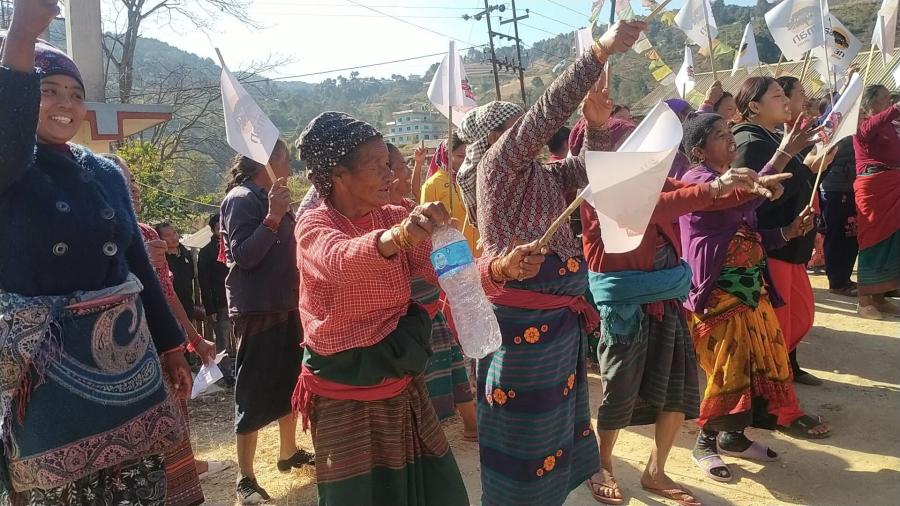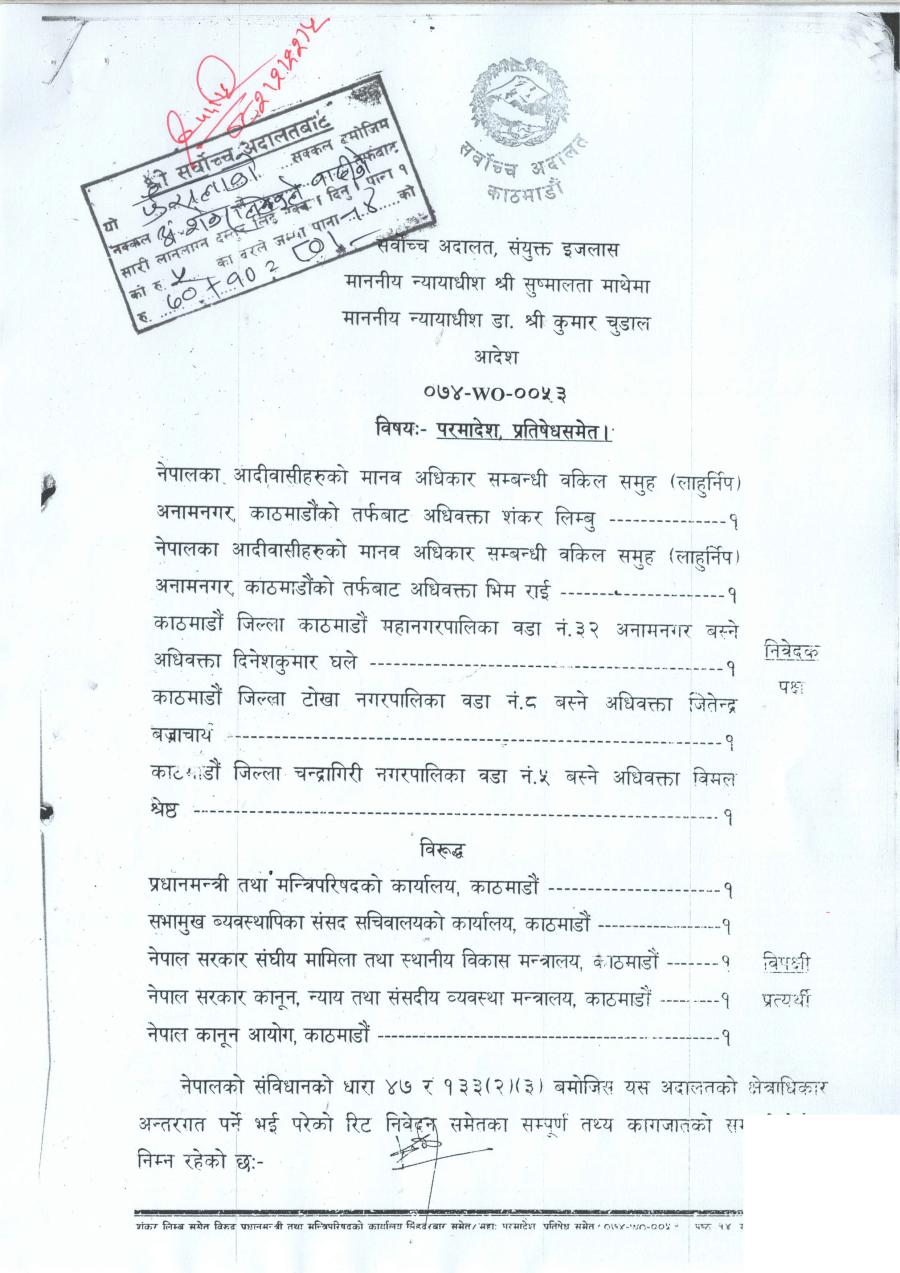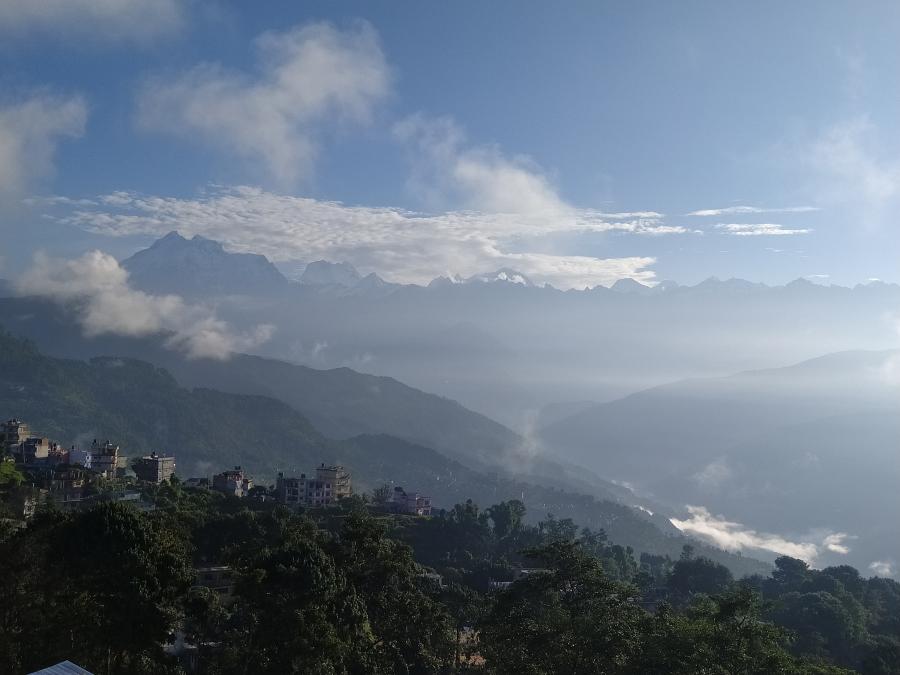A recent anthropological emphasis holds that there is not one universal shamanism, but many shamanisms. The diversity of shamanistic and mediumistic practices in Nepal supports this argument. Although the country’s specific ethnic groups can each be associated with particular religious or ritual practices, it is more useful to think of these cultural strands as part of the larger Hindu-Buddhist-shamanistic ritual system that is prevalent among the hill communities and reflects Nepal’s complex geographical, linguistic, and cultural diversity. General categories such as “shamanism,” “spirit possession,” and “spirit mediumship” fail to reflect the full variety of ways in which ritual practitioners actually operate.
In the late 1990s, I spent several years living in a village in the Solu Khumbu district of Nepal. Located at approximately 7,000 feet above sea level, the village and its ubiquitous rice terraces sprawled across one side of a steep-sided river valley that extended southward from the high glacial ice fields of the Everest region. The village was occupied predominantly by Chetris (high-caste Hindu). Other Indo-Nepalese caste groupings within the immediate vicinity included small contingents of high-caste Brahmans and low-caste blacksmiths and tailors. Other major ethnic groups within the valley and surrounding areas included communities of Tibeto-Burman-speaking Rai and Tamang. A smaller population of Sherpa lived interspersed throughout the valley.
Chetri shamans share a number of significant traits in common with shamans from other ethnic groups and communities, including the use of specific ritual accoutrements and drums. The region’s lineage mediums (kul-dhamis), on the other hand, serve primarily as vehicles for the ancestral deities of the Chetri patrilineage (kul), and as such are different from ritual practitioners in other communities.
In Nepal, the terms dhami and jhãkri (often used as a single term, dhami-jhãkri) are used interchangeably to refer to ritual practitioners believed to possess the ability to embody local deities or spirits. This emphasis on the embodiment of spiritual entities distinguishes these practitioners from other religious specialists who cannot or do not desire to interact with spirits. In broad anthropological terms, dhami is commonly used to refer to “oracles” or “spirit mediums,” while jhãkri (including corresponding linguistic variants, such as Tamang bombo) is generally translated into English as “shaman.”
In keeping with local parlance, dhami refers to the person who fulfills a specific ritual function, while the hyphenated kul- and -jhãkri refer to the means by which this function is fulfilled—possession by the lineage deities (kul-deuta) in the former instance, and utilization of the jhãkri’s shamanistic equipment to gain access to spirits in the latter. This emphasis on technique and specific ritual accoutrements suggests a meaningful distinction between the dhami and jhãkri practitioners. The importance of the shamanistic equipment as a distinguishing characteristic becomes even clearer when it is noted that the term jhãkri refers not only to the human practitioner, but also describes the shaman’s most common tutelary deity: The ban-jhãkri is a diminutive “spirit” covered in hair that inhabits the surrounding forest (ban), and is equipped with a drum and shamanistic accoutrements of its own.
The Landscape of the Spirits
In highland Nepal, spirits and people walk the same pathways. Ghosts and divinities inhabit the surrounding hills and forests. Shamanistic healing is integral to construing the interrelationships of body, spirit, and society. Health not only implies wellbeing at an individual, bodily level; it means that one’s familial, social, and cosmic relations proceed as a harmonious whole. Incidents of illness among Nepalese hill communities are often mapped onto the surrounding landscape. Individuals fall ill when unwittingly traversing the locale of spirit beings. The offended spirit assaults the interloper, provoking illness, and intrudes into everyday life.
Shamans and lineage mediums can access knowledge and affect or heal others as a consequence of their personal association with particular local spirits or deities. These practitioners are believed to embody these deities or spirits in particular ritual contexts. While shamans can be either male or female, the lineage mediums are exclusively male. The lineage medium only performs on particular ritual occasions, and needs no special equipment to be possessed by the lineage deities. The main requirement is that he fast and prepare himself ritually to serve as a vehicle for his possessing deities. Unlike his shamanistic counterpart, the possession of the kul-dhami invariably takes place inside the household in close proximity to a specially designated space that houses the lineage deities.
Accompanied by two or more other mediums, the kul-dhami will proceed, once possessed, to utter communal oracular pronouncements to the collective members of the lineage. Those members of the lineage in attendance may ask questions of the possessing deities. The principal questions asked on such occasions generally address familial matters, concerns relating to the wellbeing of livestock, the possible outcome of specific disputes, and other mundane concerns. The lineage mediums can also divine the causes of specific misfortunes and perform individual and collective healing rites.
A complex set of interrelationships coalesce around the metaphorical and spatial properties of the household. Management of the ritual and domestic spaces of the household, and the correct delineation of collective identity as members of a single patrilineage are fundamental concerns in the rituals of lineage mediums. By contrast, shamans’ rituals are not lineage- or caste-specific. Chetri shamans and those from other communities or ethnic groups are as competent in performing a healing rite for members of their own ethnic group, lineage, or caste as they are for someone from another group. The rites of the dhami-jhãkri serve to bind the various communities into a broad network of shared commonalities and experience. The beat of the shamans’ drums resonating across the valley throughout the night reinforces these connective associations.
One of the defining characteristics of the shaman throughout Nepal is the typical shamanistic equipment used to gain access to tutelary spirits and to combat or control spirits, ghosts, and witches. This equipment consists primarily of a drum (dhyãngro), a special costume and head-dress, and belts of bells tied around the waist or worn bandolier-style over the shoulders. The shaman typically performs alone, and the focus of his or her healing rituals are generally of an individual and familial, rather than communal nature. In marked contrast to the kul-dhami, the place where the dhami-jhãkri conducts his ritual activities is unspecified, and is determined principally based on the situation.
Embodying Spirits
The altered state of awareness of the dhami-jhãkri is associated with the constant beating of the drum and extensive chanting that enables him to enter a state of receptivity that permits communication with the spirits after a prolonged period of time. The kul-dhami, by contrast, does not require a drum to embody his possessing deities. Instead, a combination of chanting, the vigorous shaking of bundles of leaves (syauli), and his close proximity to the area inside the household that houses the ancestral deities ensures that his possession occurs much more rapidly.
When embodying their spirits, both dhami-jhãkris and kul-dhamis shake or tremble. This shaking is said to originate in the belly and extend outward to the extremities. As the deities or spirits enter the body, this shaking increases in intensity until the words of the spirits are forced up from the abdomen and through the mouth. Shamans and lineage mediums repeatedly told me that their minds remained exceptionally clear and focused throughout the experience. They said this enhanced attentiveness allowed them to see spirit forms that were imperceptible to others. The shaman, embodying his tutelary deity, will commonly encounter the spirit forms of witches, generally described either as glowing lights or human-like shadows. While dancing, the shaman will often turn his head and stare fixedly at something only he can see in the darkness. This stare, with the eyes reflecting the firelight and the face a sharp contrast of light and shadow, embodies the ability to see witches and provides the means to combat them.
Even though both types of practitioners can embody or possess spirits, their experiences are not same. The oracular deities of lineage mediums are intrinsically associated with the local environment, while the local spirits are ancestral deities of the lineage and serve as tutelary deities for shamans. These differences are particularly apparent in the way in which kul-dhamis and dhami-jhãkris first encounter their possessing spirits. New lineage mediums are initially possessed during a large ritual gathering that takes place once every three years. This ritual binds the dispersed households of the patrilineage together, and culminates when the possessed mediums sacrifice a large number of goats and drink their blood. All male members of the lineage are susceptible to possession by the ancestral deities during this time, although only a few will actually be possessed. The established kul-dhamis use their experience to assist those members of the lineage showing signs of possession, particularly as they struggle to accommodate their possessing deities. The success of this initial period of possession will determine if these men go on to become kul-dhamis in their own right the following year.
The process of becoming a dhami-jhãkri is significantly different, the most common experience involving an initiatory illness. This period of illness is often said to culminate in the abduction of the future shaman by a forest spirit (ban-jhãkri) who, after several days or weeks, releases the shamans from its subterranean lair and eventually becomes the main tutelary deity of the practicing shaman. After this initial experience, many shamans are still reliant on more experienced dhami-jhãkris to help them master what they have been taught by their tutelary deity. In such circumstances, teacher-apprentice relationships are not dependent on ethnic or caste affiliation. Apprentices will often associate themselves with the most highly regarded shamans in their locality, and establish a master-disciple relationship that transcends the normal considerations of caste-based social interaction.
Faced with War
Nepalese villagers share their landscapes not only with a profusion of spirits and deities, but with other communities and ethnic groups as well. People’s knowledge about who they are emerges from the accumulated details of their collective experience both within and beyond where they live and farm. Boundaries—spatial and temporal, visible and invisible—are constantly subject to fluctuation and influence from outside. It is this contiguous and permeable association between persons, places, and extra-human agents that seems to best characterize shamanic activity.
The future of shamanistic practices in Nepal is far from certain. They are lionized by Western audiences and fee-paying clients, caricatured by the Nepalese media and the developmental ethos of the government as being backward and redundant, and studied intensely by anthropologists and other researchers. Shamans and mediums are likely today affected, along with the rest of their communities, by the ramifications of the civil war that has been waged for the last seven years in Nepal. At the same time, social suffering caused by both sides of the conflict—Maoist insurgents and governmental forces—have accentuated the need for individual, familial, and communal healing.
Damian Walter works in the Department of Anthropology and Sociology at the School of Oriental and African Studies, University of London, where he completed his doctorate in 2001.
References and further reading
Bourguignon, E. (1976a). Possession. San Francisco: Chandler and Sharpe.
Bourguignon, E. (1976b). Spirit possession beliefs and social structure. In The Realm of the Extra-human Ideas and Actions. Bhardati, A., Ed. The Hague: Mouton.
Eliade, M. (1964). Shamanism: Archaic Techniques of Ecstasy. New York: Pantheon.
Hitchcock, J.T. (1976). Aspects of Bhujel shamanism. In Spirit Possession in the Nepal Himalayas. Hitchcock, J.T. & Jones, R.L., Eds. Warminster: Aris & Phillips Ltd.
Jakobsen, M.D. (1999). Shamanism: Traditional and Contemporary Approaches to the Mastery of Spirits and Healing. Oxford: Berghahn.
Walter, D. (2001a). Blood and Stones: Ritual, Shamanic Practice, and the Presence of Place in the Nepal Himalayas. Unpublished PhD thesis, Department of Anthropology and Sociology, School of Oriental and African Studies, University of London.
Walter, D. (2001b). The medium of the message: shamanism as localised practice in the Nepal Himalayas. In The Archaeology of Shamanism. Price, N., Ed. London: Routledge.
Winkelman, M. (1992). Shamans, Priests and Witches: A Cross Cultural Study of Magicoreligious Practitioners, Anthropological Research Papers #44. Tempe: Arizona State University.



